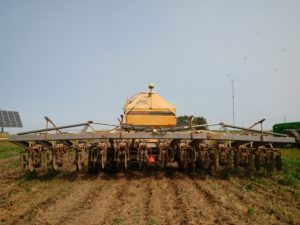Strip-tillage is not a new practice – it’s been used by some Ontario growers for almost two decades. It’s gaining traction across the province more recently, however, due to advances in equipment, GPS technology, and advantages in fertilizer placement.
What is strip-tillage?
Strip-till is a system that creates residue-free strips that the following crop is planted into. The strips typically occupy about one-third of the soil surface, leaving two-thirds of the soil undisturbed. Strip-tillage is used primarily for corn production, but can also be used for edible beans and field tomatoes.
Why consider strip tillage?
Strip-tillage allows for fertilizer to be banded or blended within the strip. It can also reduce the number of tillage passes and lower fuel costs. By leaving two-thirds of the soil undisturbed, soil erosion is minimized.
When managed properly, strip-till corn has demonstrated the potential to yield competitively to conventional tillage corn in Ontario.
Variations in strip-till equipment
There are a wide variety of options for strip-tillage equipment – from shank-based units to those with coulters only, and many configurations in between. Common questions include whether RTK is a requirement, if fall strips are better than spring strips, and how best to apply fertilizer within the strip.

Coulter-based strip-till unit on display at a field day in Huron county, 2017.
To see strip-till equipment in action and learn answers to those questions, visit the daily field demos and strip-till farmer panel at this year’s Canada’s Outdoor Farm Show. Field demos will run daily from 11:15 am – 12:15 pm at the southwest demo field and the farmer panel will take place at the Farmers Edge Knowledge tent from 1-2 pm, every day. Hope to see you there.
Source : fieldcropnews